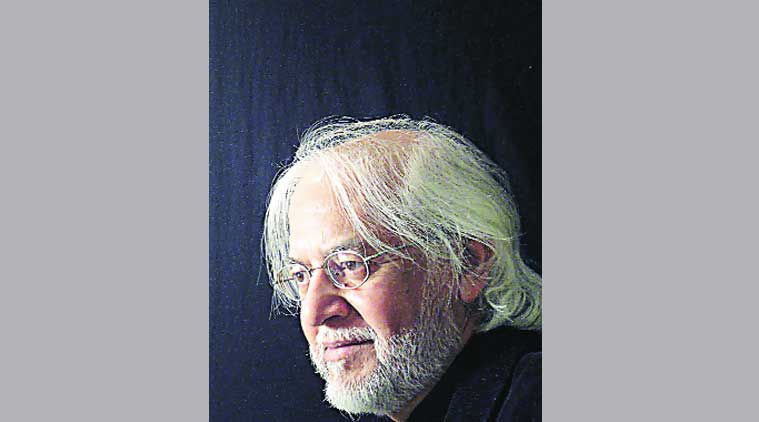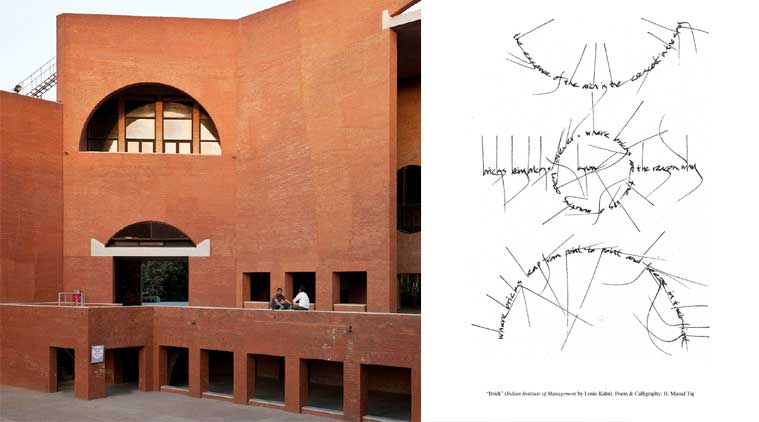Mumbai, MAHARASHTRA / Ottawa, CANADA :
Architect, poet, professor H Masud Taj is on an India tour to talk about Sinan, Istanbul’s foremost architect, who has arguably built more than any other architect in documented history.

H Masud Taj, Adjunct Professor at Carleton University in Canada, was mentored in architecture by Hassan Fathy and in calligraphy by David Hosbrough. His talk on “Sinan:Architect at the Centre of the World” in Delhi drizzled with anecdotes of Ottoman empire’s most celebrated builder, and how history and politics were fertile soil for some of Istanbul’s lasting monuments. Excerpts from an interview:
Where did your love for calligraphy and poetry develop?
In Bombay, at home by the sea with its tidal rhythms, where my father had a divine hand that remains without a tremor even in his 90s and because my mother tongue is Urdu, the most poetic of Indian languages (besides being a descendant of the classical Urdu poet, Ameer Meenai). With a father who was a shayar a mother who tore the last page of Urdu novels to replace it with her own version, with storytellers and musicians for sisters, it just had to happen. And when it did, I was 13 years old, far from home, and far from my mother tongue, in Ooty in a school, grounded on JD Krishnamurti with a sprinkling of Aurobindo, where clouds would descend valleys, enter classrooms and blur categories.
You taught architecture simultaneously at Sir JJ College of Architecture, Rizvi College and Pillai college in Mumbai
Yes, while running an architectural practice in Bombay and consultancy in Delhi besides being a fortnightly op-ed architectural columnist. Now I teach in Canada, practice in India and research in-between in Europe and Turkey. For instance this year the University’s Faculty of Public Affairs, showcased the research and photography I did while reading medieval buildings and Don Quixote, in Toledo, Spain.
In your next book on the Seven Muslim Wonders & the Making of the Modern World, which are the sites you will be exploring?
Those that I have visited in Agra, Cairo, Cordoba, Granada, Isfahan, Istanbul and Mecca. If you add Jerusalem that is eight but one of them is latent in all others just as the sound of alif is latent in all letters of Arabic.

And where do you see the intersections?
Seven mnemonic monuments embody civilizational ideas. Buildings are books that someone forgot to burn; they await a reading and then paradigms begin to shift and you see the world anew and hopefully the reader will too. For instance, satellite images show that the original Taj Mahal complex extended much further at both ends: across the Yamuna to the royal Mughal garden with a reflecting pool that reveals why the Mughals called it Rouza-e-Munnawara: The Illuminated Tomb (Taj Mahal is a misnomer). However, the real action of the complex was at the other end: the quadrant bazaar as a node of the global Muslim network of an ‘ethically driven commerce’, of poet merchants and Sufi merchant brotherhoods.
What prompted this book?
Many things but the final straw was Jerry Pinto saying I was offering “forever the promise of beauty”. He inscribed that in my copy of his incredible Em and the Big Hoom. He was right.
And when will it be launched?
Ship building is easy; it is the ocean that takes a while.
You were inspired by Louis Kahn’s Indian Institute of Management building in Ahmedabad. You even wrote a poem in calligraphy about it.
As a student, I was at CEPT in Ahmedabad for a month, participating in a workshop designing shells upside down. In the evenings, I’d sprawl on the IIM lawns. Once at dusk, above several storeys of brick arches, right on axis, was the upturned crescent. That’s when the Brick Poemoccurred. Decades later when I began to study Sinan in Turkey, I understood what that poem really meant; poets can lag behind the curve of their poems. I’ll be giving a talk at CEPT and that’s when after more than three decades the Brick Poemwill return to its site.
You have known and been with the legendary Egyptian architect Hassan Fathy and wrote a book on the elusive Indian architect Nari Gandi, apprentice to Frank Lloyd Wright. What were your learnings from and with them that you bring to your work, as a teacher and an architect?
Buildings are prophecies if they are mainstream; or conversations. Gandhi was trapped in his quest for absolute freedom. He excelled as a conversationalist; but did not influence mainstream. Fathy’s prophecies were at mainstream’s edge, yet conversed with the surroundings. Choose between an escapee and an escape-artist.
What does your long poem, which was written while staying in all those houses of Gandhi, say? Could quote a few lines.
Courtyard is silence
To talk of the courtyard
Is to break the spell.
You co-authored a book of poems, Alphabestiary, in which each letter of the alphabet is associated with an animal, such as Ant, Bull, Cat, Dragon, etc. What were you influenced by?
The animal fables of Panchatantra, Aesop Fables; Ibn Arabi arguing for animal rights in the 12th century; the 7th-century father-of-kitten Abu Hurairah. Mostly when we decided to call our son Nuh in Urdu, Nuhh in Arabic, Noah in English, Noé in French. Soon after, Dragonflyfluttered in (its now on YouTube) with a host of animals in its wake turning the oral poet into a one-man travelling zoo. Alphabestiaryis a thin slice, yet featured at the International Festival of Authors in Toronto.
Who, from the past, do you think looks over your shoulder when you write?
Ameer Meenai, and hopefully he can detect Urdu’s fragrance in my English.
Taj has lectured at Nashik, Pune and Delhi and Goa. His talks in Ahmedabad and Mumbai are on July 22 and 24 respectively.
source: http://www.indianexpress.com / The Indian Express / Home> Lifestyle / by Shiny Varghese / September 28th, 2015








